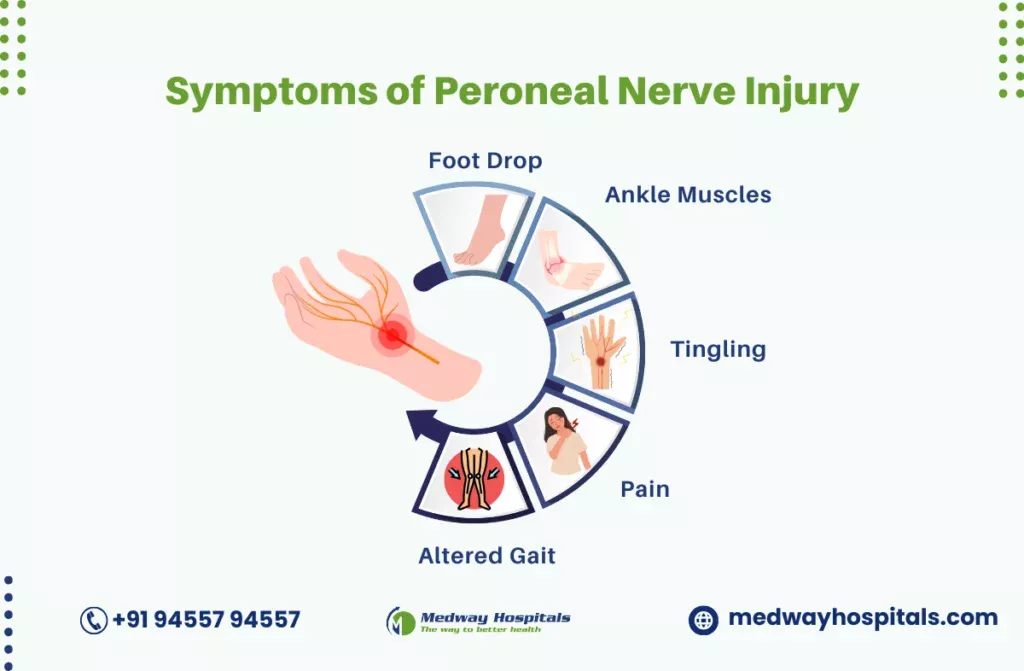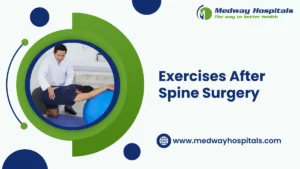A peroneal nerve injury occurs when the peroneal nerve, which runs down the outside of the knee and along the leg, is damaged. This nerve controls muscles that help you move your foot and toes. When injured, it can cause pain, weakness, numbness, and difficulty walking. The severity of the injury varies, with some cases leading to foot drop or permanent weakness. In this blog, we’ll discuss the causes, symptoms, diagnosis, and treatment options for peroneal injury, as well as how to manage it effectively to ensure proper recovery and regain movement and function.
What Causes Peroneal Nerve Injury?
There are several possible causes of peroneal nerve injury, which can occur due to physical trauma, prolonged pressure, or certain medical conditions.
- Trauma: Direct injury to the knee, lower leg, or ankle, such as a car accident, sports injury, or fall, can cause damage to the peroneal nerve.
- Prolonged pressure: Sitting in positions that put prolonged pressure on the knee or leg, such as crossing your legs or resting your knee on a hard surface for an extended period, can lead to nerve compression.
- Surgical complications: Surgeries around the knee or hip area can sometimes result in injury to the peroneal nerve.
- Medical conditions: Conditions like diabetes, vascular disease, and certain types of neuropathy can contribute to peroneal nerve pain and dysfunction.

Symptoms
The symptoms of a peroneal nerve injury can vary depending on the severity and location of the damage. Common symptoms include:
- Weakness in foot movement: Difficulty lifting the foot (foot drop) or dragging the foot while walking, often seen in cases of common peroneal nerve palsy.
- Numbness or tingling: Loss of sensation or a “pins and needles” feeling on the outside of the lower leg or foot.
- Pain: A sharp or burning pain along the outer side of the lower leg.
- Muscle atrophy: Over time, muscle wasting may occur in the foot and lower leg due to the nerve not functioning properly.
Diagnosis
Diagnosing a peroneal nerve injury involves a combination of physical examination and medical tests.
- Physical Exam: A doctor will assess muscle strength, reflexes, and sensation in the affected areas. They may ask the patient to perform certain movements to evaluate foot function, especially in cases of common peroneal nerve dysfunction.
- Electromyography (EMG): This test measures the electrical activity of muscles and can confirm nerve damage.
- Nerve Conduction Study: This test measures how well electrical impulses move through the peroneal nerve and can help pinpoint the location of the injury.
Treatment options
Treating a peroneal nerve injury depends on the severity of the damage and the underlying cause. Treatment options include:
- Physical Therapy: Physical therapy is often recommended to help restore strength and mobility. Exercises may focus on improving foot and ankle movement and preventing muscle atrophy.
- Medications: Pain relievers, such as nonsteroidal anti-inflammatory drugs (NSAIDs), can help alleviate discomfort. In some cases, doctors may recommend medications to reduce peroneal nerve pain and manage symptoms effectively
- Bracing or Orthotics: A brace or custom orthotic device may be used to help support the foot and ankle during the recovery process, especially if foot drop is present.
- Surgical Intervention: In severe cases, surgery may be needed to repair the nerve or relieve pressure on the affected nerve.
Management and Treatment
Effective management and treatment of a peroneal nerve injury requires a multi-faceted approach:
- Rest and elevation: Giving the injured area time to heal is essential. Elevating the leg and avoiding movements that strain the nerve can reduce inflammation and promote recovery.
- Surgical options: If conservative treatments fail, surgery might be necessary. This could include nerve decompression or nerve grafting to restore function.
- Ongoing rehabilitation: Even after surgery, rehabilitation through physical therapy is crucial to ensure proper healing and recovery. Therapy will help restore strength, mobility, and function, particularly for individuals dealing with common peroneal nerve palsy, where restoring foot and ankle movement is essential for regaining independence.
Prevention
While some causes of peroneal nerve injury are accidental and unavoidable, there are steps you can take to reduce your risk:
- Avoid prolonged pressure on the knee or leg by changing sitting positions regularly.
- Wear proper footwear: Ensure shoes provide adequate support, especially during physical activities.
- Stretch and strengthen: Engage in exercises that improve flexibility and strength in the legs, ankles, and feet.
- Manage medical conditions: If you have diabetes or other conditions that can affect nerve health, managing these conditions can help reduce the risk of nerve damage.
Rehabilitation and Exercises
This topic would focus on the rehabilitation process and the importance of targeted exercises in recovering from a peroneal nerve injury. It could cover:
- The Role of Physical Therapy: How physical therapy helps regain strength, mobility, and function after a nerve injury.
- Effective Exercises: Specific exercises that target the muscles controlled by the peroneal nerve to improve foot and ankle movement, essential for recovery from common peroneal nerve dysfunction.
- Pain Management: Techniques for managing pain and discomfort during the recovery process.
- Preventing Further Injury: How to avoid reinjuring the nerve while healing.
Peroneal Nerve Dysfunction: Long-Term Effects
- Chronic Pain: Some individuals may experience ongoing discomfort in the affected leg, which can impact daily activities.
- Permanent Weakness: In severe cases, the leg may remain weak, affecting movement and strength.
- Difficulty Walking: Foot movement may become challenging, leading to difficulty walking or standing for long periods.
- Recovery: While many recover fully with treatment, some may experience lasting mobility challenges.
- Ongoing Therapy: Continuous therapy and rehabilitation are key to managing long-term effects and improving quality of life.
Conclusion
In conclusion, a peroneal nerve injury can have a significant impact on your ability to move and perform daily activities. However, with prompt diagnosis and proper treatment, many individuals experience a full recovery. Medway Hospital is here to support you in understanding the causes, symptoms, and treatment options for peroneal injury. Our team of experts is dedicated to helping you regain your mobility and improve your quality of life. For more information or to schedule a consultation, please contact Medway Hospital today.










